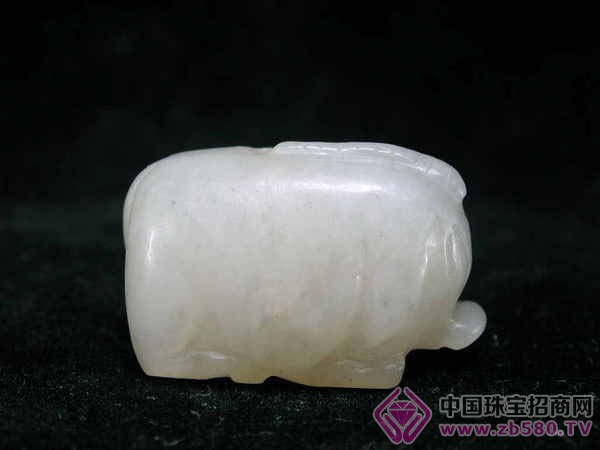Tang Yu's exotic customs

The Tang Dynasty's economy prospered, cultural development, entered an open society, learned and learned from the excellent culture outside the domain, and also embodied a typical exotic style in the jade carving. The jade carving is mainly composed of carvings and round carvings. The early stage of the round carving technique is realistic, and the legacy of the Wei and Jin stone carving folk clay sculptures is retained, combined with the painting line drawing technique at that time, emphasizing the animal muscle sense, jade texture, and farsightedness in the animal. The edges are decorated with fine lines, but they do not affect the overall muscle and visual effects. The tail is mostly the curve "cloud tail", accompanied by the degeneration phenomenon of the animal's tail "bamboo pattern" commonly used in the Han Dynasty, and more emphasis on the animal "claw" and "hoof" realism, and the head is huge, the jade is excellent, and most of the carved animals climb. There are many lying postures. Such as camels and so on.
There are two kinds of techniques for plane engraving: one is to dig the ground, the fine part is added with the Yin line; the other is the inscription, the yin is wide and thin, the width is deep, which can indicate the stacking of the branches and leaves; Such as flower buds, flowers. The decorative carvings are mainly two kinds of embossed and bas-relief. The characteristics of the Yinxian engraving are outlined by the extremely thin small round plaque (hooking), which is dense and dense, and the straight line and the song coexist.
Feitian in the Tang Dynasty is a figure in Buddhism, and Yu Feitian has opened up a new field for jade ornamentation. Yufei Tianpei jade is a thick jade piece carved in a sculpt, showing a semi-stereoscopic shape. The face is fatter and more plump, and the nose and the convex eye are slender.
The appearance of the thick Yinxian originated from the Wei and Jinnan Northern Dynasties, which were backward in the jade carving technique because of years of war. At this time, the style of the Han Dynasty was followed, but it was inferior to the Han Dynasty. Therefore, it can be inferred that the thick Yin line is a variant of the silk thread of the Eastern Han Dynasty. Due to the backwardness of the technology, the fine silk thread is turned into a thick Yin line, which is deep in the foot, the middle is thick, the tip is thin, and the line is very obvious. The time ornamentation has become the main thread of the Tang Dynasty jade.
The jade belt is boasted by the method of smashing the ground, and the shovel is wide and the surface is wide, so that the surface is “pool surfaceâ€, the surface is flat, and the decoration has the effect, one on the sculpture Use the hook to outline the shape. Such as the tiger-shaped strip, its decorative method can be described as unique. Common people, the outer edge of the floral pattern has a thick swirled border, the inner part of the frame is concave, and the pattern of human lines, patterns, birds and birds is drawn on the concave ground with embossing and Yin lines. The pattern is striking and has a three-dimensional embossing effect, which makes the jade carving theme more prominent.
The parallel Yinxian and the reticular lines are both Han and Wei traditions, and influenced by the Western culture, giving people a refreshing feeling. The mosaic pattern is the most typical ornamentation of the Tang Dynasty. It has large leaves and large leaves, and there are often thinner lines on the leaves. For example, the parallel line of the bird is used for clothing lines, hair, flowers, feathers, etc.; the meshy lines are mostly used for flower buds, animal scales, etc. Before the Tang Dynasty, there were very few plant patterns, and the appearance of flower patterns and flower and bird patterns reflected the aesthetic appeal of the great people of the Tang Dynasty and nature.
Jade is not only widely used in the pattern, but also popular with the flower pattern. It is also decorated with the human body, flowers and birds. The face of the Tang Dynasty Hu artificial elephant is mostly deep-eyed, curly, and is influenced by foreign culture and has an exotic flavor. In the Tang Dynasty, the cloud pattern almost became a scroll, and the tail of the animal was “cloud tailâ€. At this time, the jade was focused on the use of lines, and the lines were patterned with the inscribed lines. The lines were round and smooth, flying like a soft, soft belt. Just like a painting.
Mens Knit Wear,Oem Velour Mens Track Suit,Custom Track Suit Men Suit,Men Brand Tracksuit
ShaoXing City Silversilk Garments CO.,LTD , https://www.silversilksuits.com